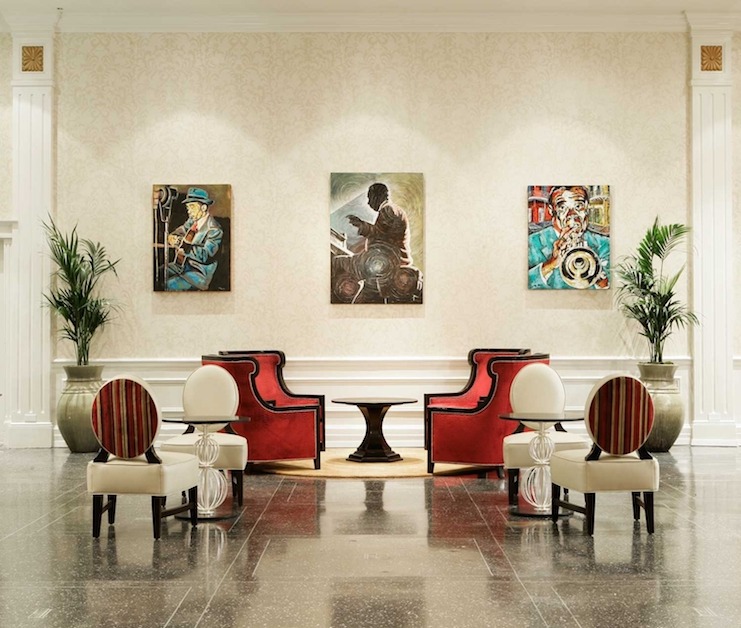May marks the arrival of National Preservation Month. In the hotel industry, restoring and preserving properties with rich pasts comes with its own set of challenges. Lisa Haude, founder and president of hospitality interior design firm Paradigm Design Group, has experienced firsthand this process of balancing modernization with saving the charm and authenticity of historic properties during renovations—from the 125-year-old Roosevelt Waldorf Astoria in New Orleans to the maritime Weare Cottage in Maine. LODGING touched base with Haude to discuss the processes behind renovating historic hotels.
What is your approach when you are beginning renovations on a historic property?
Just like any new project, we start conducting extensive research on the area, lifestyle, and location of the building. However, with historic buildings, we take it one step further and learn all we can about it—when it was built, who built it and why, what unique features and history it has, what impact it has on the city, and how the locals interact with it.

When we started working on The Roosevelt, a Waldorf Astoria Hotel located in New Orleans, it quickly became apparent that this property had an integral connection to the city and was a beloved part of history. The Roosevelt was especially popular in the ‘30s and ‘40s as the iconic Blue Room opened and became the premier music venue for top performers, which included Glenn Miller, Tommy Dorsey, Sammy Kaye, and many others. The property also had major political connections, as U.S. Senator Huey P. Long used one of the suites on the 12th floor as his personal headquarters and residence. Locals also loved coming to the property to enjoy the famous Sazerac Bar, the Fountain Lounge, and the Christmas décor.
As we began the renovation after Hurricane Katrina, it became imperative that we designed the hotel with a nod to its grand old days from the 1930s and ‘40s, but modernize it for today’s discerning guest. Now, when guests visit The Roosevelt, they feel that history come alive and can truly appreciate the beauty of this property.
How do you handle the unique challenges that come with renovating historic properties?
Historic buildings require a lot of patience and attention to detail as they have their own unique set of challenges. Since many of these buildings were built in the late 1800s or early 1900s, we often end up with a multitude of quirky guestroom shapes and sizes. This may include tiny bathrooms or rooms, odd window placement, or unique shapes that make furniture placement difficult to do. However, if extensive renovation is to occur, many times we can correct those issues and create a space that is more conducive to the guests’ needs and wants for today.
On the other hand, historic buildings typically feature amazing architectural details that we want to highlight and work around, rather than replace. This could include unique flooring, stunning carved millwork, stained glass windows, intricate metalwork, or other interesting features. Sometimes, we are not even aware that these details exist until we start demolition and discover these elements hidden in a wall or buried beneath layers of carpet or tile. If it’s an important part of the building’s history, we may even rework the overall design, just so we can implement this new find into the décor and help bring out the building’s natural and historical charm.
For example, at The Roosevelt, I discovered through historic photos and during demolition a stunning mosaic floor that was part of the original lobby floor when it was built in 1894. While we were not able to salvage the original floor, we were able to replicate it exactly with detailed mapping and color matching of the tile so that the entire lobby now features this intricate design.

How do you determine which elements of a property are worth preserving and which can be updated and modernized?
In my opinion, we should always try to preserve or replicate as many of the historic architectural features as possible. These are the bones of the building and they help tell that unique story. Sweeping ceilings, detailed and hand-carved plaster or millwork, and original lighting, all convey the beauty from the past and it is important that whatever new elements we add only help to complement these pieces. It’s often important to implement new, luxurious finishes or furniture to meet the needs of the modern guest, but we want to make sure that we do not overwhelm the space with too many modern elements, either. Sometimes, simplicity is best.
What do you enjoy most about working on historic projects?
I love the challenge and the ability to bring a beautiful, old relic back to life. I really enjoy the intricate detective work we do on the front-end to learn all about the hotel’s past, as well as what unique architectural elements exist in the property in order to create its new life story. In the end, it becomes this lovely, curated space that many people can enjoy for generations to come, which brings pure joy to my heart.












